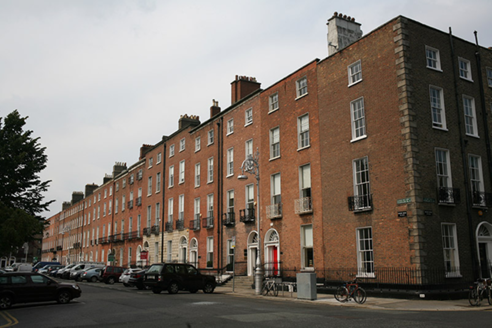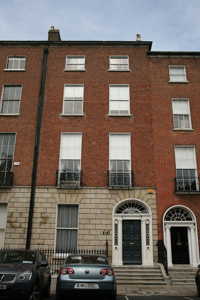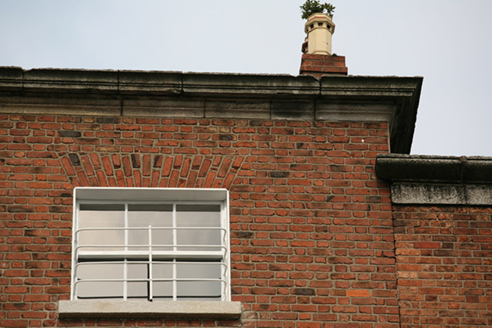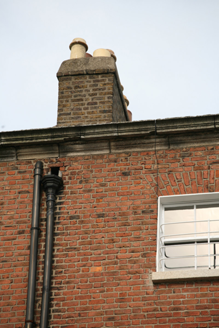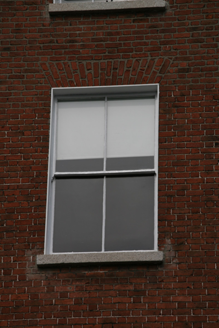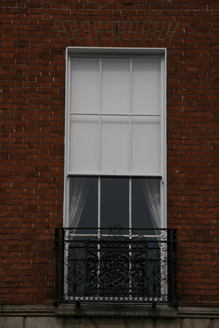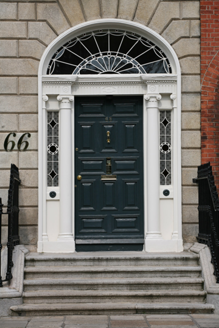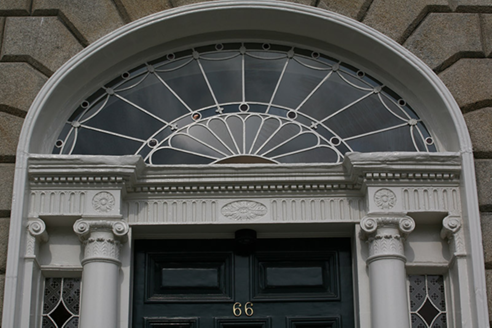Survey Data
Reg No
50930081
Rating
Regional
Categories of Special Interest
Architectural, Artistic
Original Use
House
In Use As
Office
Date
1820 - 1825
Coordinates
316557, 233120
Date Recorded
10/09/2015
Date Updated
--/--/--
Description
Terraced two-bay four-storey over basement former townhouse, built 1822 as one of a pair, with two-storey return over basement to rear (north). Now in use as offices. Double-pile slate roof set behind parapet wall with moulded granite coping, cast-iron hopper and downpipe breaking through to west. Buff brick chimneystack with lipped clay pots to west party wall and further red brick chimneystack with octagonal-profile clay pots to east. Red brick walls laid in Flemish bond with lime wigged pointing and rusticated granite ashlar ground floor. Moulded granite plinth course over ruled-and-lined rendered basement wall. Gauged brick square-headed window openings with replacement granite sills and early-twentieth century timber sash windows; three-over-three to third floor with iron sill-guards, two-over-two to second floor, recently replaced six-over-six to first floor with replacement decorative iron balconettes and possibly original eight-over-eight pane to basement with iron grille and granite surround. Depressed arch-headed door opening with voussoired granite surrounds and masonry Ionic doorcase comprising square-headed door opening flanked by engaged Ionic columns, slender sidelights with replacement decorative glazing and Ionic pilasters, all supporting stepped fluted and dentilled lintel cornice with rosettes and replacement decorative fanlight. Original timber panelled door with twelve raised-and-fielded panels and brass door furniture opening onto granite platform and nosed granite steps to street. Platform and basement enclosed by original decorative wrought- and cast-iron railings set on moulded granite plinth wall. Steel steps with decorated balustrade provide access to basement. Forming part of a continuous terrace of former townhouses lining north side of Fitzwilliam Square. Modernised mews building to rear plot, on Pembroke Lane.
Appraisal
A former townhouse, built as a pair with No. 65 (50930082), and recently restored to a high standard, this pair stands out within the largely coherent terrace, due to the rusticated granite ground floor. The elaborate doorcase and generous proportions add subtle variety to the square. It retains its original external appearance and contributes to the historic character of the square and the wider south Georgian core. According to Casey (2005), 'No. 66, built by Clemend Codd in 1822, has Greek Ionic pilasters and columns to this return with casts after Thorwaldsen's relief of Night and Day.' Laid out in 1791 by the surveyors J & P Roe, Fitzwilliam Square was the last of the city’s Georgian squares to be completed. Development was staggered and progressed slowly until after the Napoleonic Wars.
